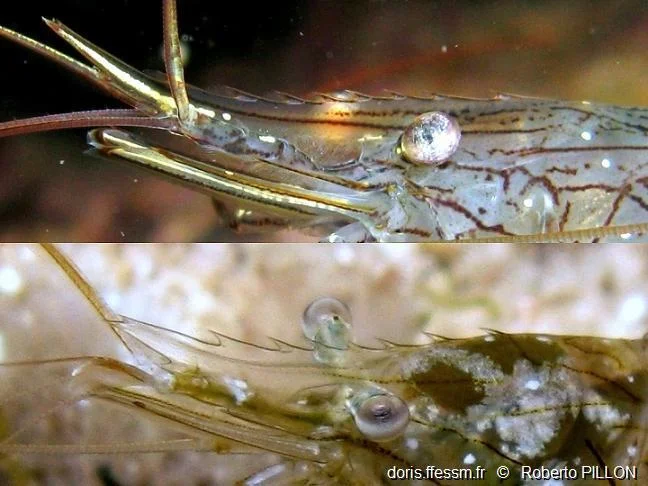Photographs of the rostrum of two Palaemonid shrimp species: P. serratus (top photo) and P. elegans (bottom photo). Photo credit: Roberto Pillon, doris.ffessm.fr.
Title of the book : Constraints and Adaptations to Global Change at the Land-Sea Interface: For a Shared Ecological and Energy Transition
Book chapter : Spatio-temporal distribution of intertidal shrimps, P. serratus and P. elegans from two western and eastern Cotentin sites (Normandy, France) – p 75-95, Editions Springer
The spatio-temporal distribution of two Palaemon shrimp species was studied at two sites—Grandcamp-Maisy (GRE) and Blainville-sur-Mer (BLE)—on the English Channel coast (Normandy, France). A seasonal survey (spring, summer, autumn 2022, and winter 2023) conducted at 15 sampling stations (three transects and five hypsometric levels) at GRE and nine sampling stations (three transects and three hypsometric levels) at BLE revealed the presence of two species, Palaemon serratus and Palaemon elegans. The abundance of both species showed seasonal variations related to reproduction and recruitment, as well as migrations between the intertidal zone and offshore areas in the case of P. serratus. Spatially, within the intertidal zone, P. elegans was more common at higher hypsometric levels, while P. serratus was more abundant at lower levels—except in autumn, when juvenile shrimps were recruited at the uppermost levels. The “ecological niche” breadth was broader for P. serratus than for P. elegans at GRE and particularly variable for P. serratus at this site. Finally, the greatest niche overlap was recorded in summer (GRE) and autumn (BLE), though it remained relatively low throughout the seasons (maximum value of 0.246 at BLE). Although the two studied species share biological similarities (both belonging to the family Palaemonidae) and common ecological characteristics (e.g., presence in rocky intertidal areas), the results suggest relatively limited interspecific competition between them.

